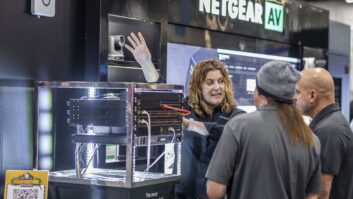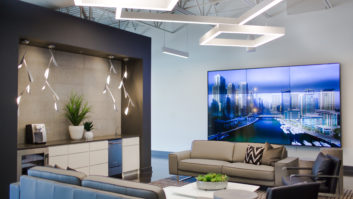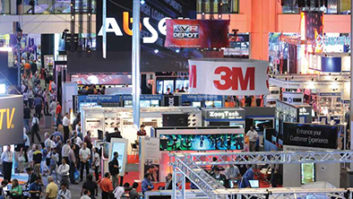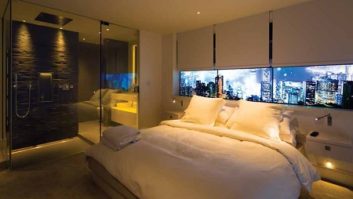There’s always been a bit of crossover from residential AV integration into light commercial, but as the housing market dried up and economy sputtered, more and more residential integrators have shifted resources. On the surface, the two markets share similarities, but experts agree that there are important distinctions to consider and challenges that commercial projects present for residential installers.

Crossing over to light commercial projects like this restaurant requires installers to employ different skills. Pictured here is Xantech’s LM110RP Smartpad3 single gang keypad controller, which guests at Just George’s in Kill Devil Hills, NC, use to control content at each booth.
Different Customer Types. Whether you’re selling or designing a light commercial system, there’s a significant difference in the customers. While in a home theater install you’re typically working with the individual most likely to operate the system, “In a commercial install, the equipment is generally hidden and multiple people will be using it, so it needs to be fool-proof, have intuitive operation, and must perform flawlessly every time,” said Graham Hallett, Xantech, president.
From the sales perspective, when you’re selling to a church or school for example, “You don’t have the luxury of selling to one person. It’s more often dealing with a committee. Finding a way to, one, present to a group like that and, two, coming up with a system design that can bridge across the various wants and needs is clearly challenging,” said Jeff Kussard, Capitol, director of strategic development.
Know What You’re Getting Into. Taking on a commercial project should involve extra preparation. According to Tom Lowell, residential sales manager, Lowell Manufacturing Company, custom installers crossing over “should know their limits before stepping into new territory.” There might be building codes and other restrictions or project management elements that you wouldn’t be familiar with from residential projects. As Lowell put it, if this is your first time doing a commercial installation, “you need to view every detail of the job under a microscope, to make sure you have not missed any details.”
Xantech’s Hallett recommends setting up systems before going to the client to avoid “learning the equipment for the first time at the job site.” Kussard suggests partnering with someone that’s experienced in the commercial arena.
Simple and Intuitive. One major challenge Kussard identified is the tendency of residential contractors to “gravitate to the complex.” After all, the more complex a home theater is, the more custom it is. “That’s the antithesis of the way you need to do things in the commercial environment,” he said. In other words, commercial installations are “all about simplicity and long-term reliability.” This idea extends to the products selected for the project as well. Hallett noted, “the interface needs to be especially intuitive for the user, because so many different people will be operating it. Whereas in residential, “You don’t work from such a broad palette of products. You keep your assortment of goods very limited, good, and repeatable,” Kussard said.
Although there are various types of challenges in this area, “None of these issues are insurmountable,” Kussard said. “We’re still talking about sending audio and video down wires, routing, reproducing and managing, and making sure it is transmitted in an intelligible way.”
Lindsey Adler is assistant editor for Residential Systems and Systems Contractor News.






